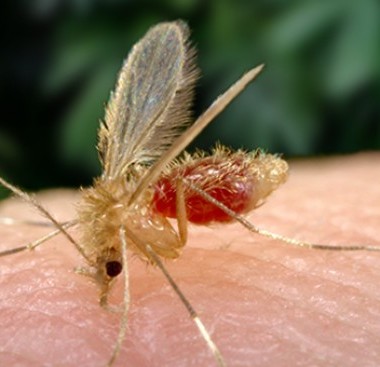Federal Report Highlights Animal Rights Terrorism
Costs run to millions as researchers and others cope with arson, bombs, and animal releases
By: Staff Date: 01/5/1994 Category: | Animal Rights Extremism | Research Reports |
"In July 1989, without warning, Animal Liberation Front activists entered a laboratory and office at Texas Tech University's Health Sciences Center in Lubbock, Texas."
So begins the description of an incident designated by the Federal Bureau of Investigation as an act of domestic terrorism.
The laboratory was the center of research on sleeping disorders, including Sudden Infant Death Syndrome, conducted by Dr. John Orem. When the ALF raiders quit the premises, they left damaged and disabled equipment and slogans spray-painted on the walls and stole five adult research-conditioned cats. Immediately after the invasion, People for the Ethical Treatment of Animals aired ALF's statement justifying theft of the cats and Orem and his research became a target of vicious harassment.
The laboratory was effectively closed for 45 days. Total direct and indirect costs of the break-in was estimated at more than $1 million after equipment was repaired or replaced, new cats were purchased, additional security was installed, and inactive staff was paid.
The Orem case is one of 313 incidents of animal rights extremism charted in "The Report on the Extent and Effects of Domestic and International Terrorism on Animal Enterprises," a joint report from the Departments of Justice and Agriculture following a study of the subject directed by the US Congress. Two other incidents meet the FBI definition of terrorism, the arson destruction of a veterinary diagnostic laboratory at University of California at Davis in April 1987 and the arson at University of Arizona at Tucson two years later.
The study was ordered as part of the Animal Enterprise Protection Act, passed by Congress in response to radical activities on behalf of animal rights. The act makes it a federal crime to cause more than $10 thousand in damages by disrupting activities at commercial and academic enterprises that use animals for food or fiber production, agriculture, research, or testing; zoos, aquaria, circuses, rodeo, or lawful competitive animal events; and fairs and similar events intended to advance agricultural arts and sciences. Penalties include fines jail sentences, including life imprisonment if serious injury or death is a result of such activity.
The first reported incident of animal rights activity occurred in 1977 according to the report, when a group calling itself the Underground Railroad released two dolphins from a marine laboratory at the University of Hawaii. Since then the incidents have escalated with 201 of the 313 reported occurrences taking place in 1987-1991.
The bulk of incidents (160) are considered to be minor vandalism such as graffiti painting of animal rights slogans or threats such as "Meat is Murder" and "Meat is Death and You Are Next"; broken windows; defacement; glued locks, etc. These would not fall under the Animal Enterprise Protection Act as they do not involve damages of $10,000 and would not be reported to federal authorities. This category of vandalism may be under-represented in the document, for many cases are never reported to any agency.
Seventy-seven cases involved the release ("liberation") of animals, a staple of animal rights activity.
"In some cases, raids conducted by the Animal Liberation Front are known to have resulted in the release of hundreds of animals," the report says. "By ALF activists' own admission, for instance, animals of undomesticated origin that are bred and raised in captivity are most often released into the wild where they may not possess the skills to survive. Ironically, in some cases the animals the activists intended to release during the given raid never left their cages. In other cases, animals were known to have returned to the victimized facility following the incident."
Although less common, major vandalism, arson, bomb threats, and actual firebombings comprised eight percent of all reported incidents and caused millions of dollars in direct, collateral, and indirect damages, thus meeting the ALF goal of economic damage to institutions and businesses that use animals.
Even so, the US is better off than Great Britain, where ALF and other groups are far more willing to use incendiary devices, mail bombs, and car bombs to terrorize institutions and individuals and to threaten product tampering to damage company reputations and bank accounts. A child was injured by a car bomb and two cases of claimed product tampering cost the manufacturing companies a total of £12 million. But animal rights radicalism came to the US from Britain, the report notes, and this escalation in that country could bode ill for this one.
The institutions hit hardest by animal rights activities include research (university and private) and agriculture. Sixty three university facilities and 21 private research laboratories and medical centers were hit for a total of more than $6.5 million. Seventy six businesses involved in animal agriculture, including food production facilities, retail meat outlets, breeding ranches, restaurants, professional associations, and feed cooperatives, were hit for more than $1.1 million in damages, mostly arson. Two of these cases occurred after the Animal Enterprise Protection Act was passed, both involving arson. In October 1992, activists raided a US Department of Agriculture predator project at Utah State University and caused $110 thousand in damages. A month later, radicals firebombed five trucks belonging to Swanson Meat Company in Minneapolis, Minnesota, another $100 thousand-plus hit.
The most active group by far in these incidents is the Animal Liberation Front, a shadow guerrilla organization derived from the ALF in England. ALF claims responsibility for more than 60 percent of the 313 violent or disruptive acts. Believed to be a loose organization of fewer than 100 militant members, ALF is supported in its endeavors by People for the Ethical Treatment of Animals, an above-ground animal rights group that publicizes ALF's violent, fanatic escapades at press conferences.
Following ARF's claimed responsibility for several raids, the Federal Bureau of Investigation launched a probe of the group as a terrorist organization. Grand juries convened in Oregon, Washington, Michigan, and Utah to investigate several ALF-connected incidents. Only the Michigan investigation has resulted in any indictments so far.
Only one suspected ALF member - Roger Troen - has been convicted of involvement in its radical raids and a second - Rodney Coronado - has been indicted. Troen was found guilty of first-degree theft and second-degree burglary for a break-in at Oregon State University. Coronado was wanted for his connection with a break-in and arson at Michigan State University in 1992 and for charges of vandalism of fur retailers in Canada. He was finally arrested in Arizona and was tried and sentenced in Michigan in 1995.
The report notes that the 313 occurrences it studied are easily eclipsed by the thousands of incidents in Great Britain during the same period. In 1991, 1718 cases caused £8.5 million in damages. Furthermore, activists in Great Britain are more likely to use crude incendiary devices in their attacks; more than 250 such devices were used against the meat industry alone in 1991. Attacks by animal rights activists have borne fruit. They have forced universities and businesses to spend millions on security systems and on the repair and replacement of equipment, have reduced the morale of those involved in research and agricultural businesses, caused cancellation of grants and disrupted valuable research, and led to higher insurance costs. However, the number of incidents has declined since 1991, perhaps because of increased security now in place at many institutions, increased awareness and censure of violence in support of animal rights activities, and laws such as the Animal Enterprise Protection Act.
About The Author
All Authors Of This Article: | Norma Bennett Woolf |












